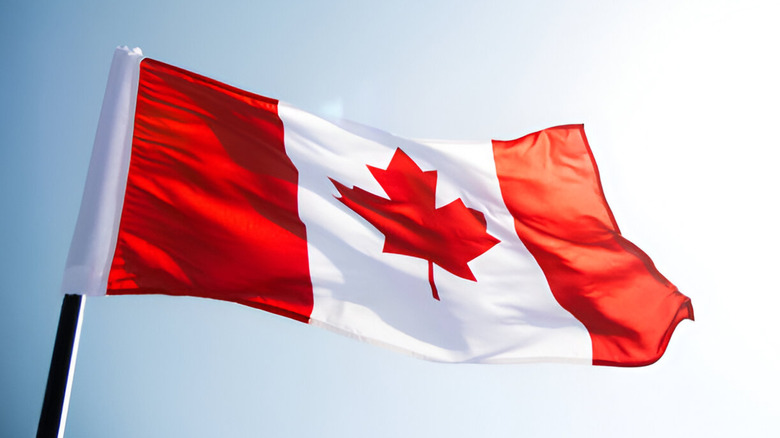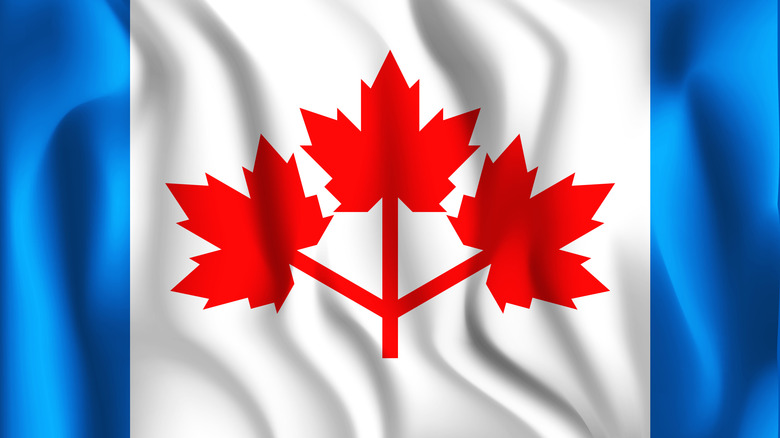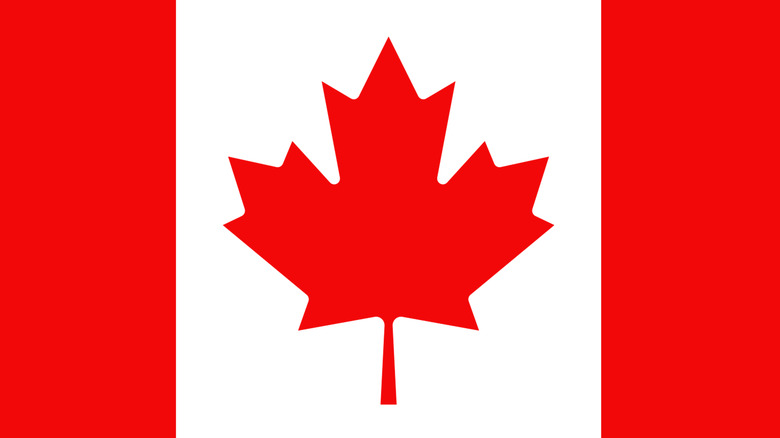What Does Canada's Flag Symbolize?
The national flag of Canada is instantly recognizable: A red maple leaf on a white background, with two thick red borders. Though such things as national flags feel timeless, its history is surprisingly short, having been made official in 1965 by proclamation of the British Monarch Queen Elizabeth II on January 28 that year. Previous designs had incorporated the flag of the United Kingdom, which once included Canada as a colony before the country gained independence in 1867.
The design was one of three shortlisted — one contained three leaves (akin to the leaves on the Canadian coat of arms) and another that maintained the British flag and associated heraldry to denote the country's colonial history. However, with Canada looking to the future as its centennial approached, the 15 members of the flag committee opted for the simpler version that remains the Canadian national flag to this day. And as well as denoting Canadian independence — the country has remained sovereign ever since, despite very early attempts by the United States to conquer it — the individual aspects of the design also have symbolic meaning.
The Great Flag Debate
The decision-making process that led to the national flag of Canada was both long and hotly debated. In fact, the years in which Canadian politicians grappled with what the national flag should be came to be known as the "Great Flag Debate," which saw consensus finally build around the desire to minimize colonial symbolism on the flag. Indeed, in the early decades of its independence, Canada had flown the British Union Jack, but by the 1880s, it was common to see the "Red Ensign," a flag featuring the Union Jack prominently in the top left corner and the Canadian coat of arms on the right, flown on public buildings. Prime Minister Mackenzie King began making moves to establish a true national flag as early as 1925, with the Red Ensign becoming the official federal flag of Canada in 1945.
The appetite for a new flag grew in the following two decades, with Lester Pearson raising the issue as both a member of the opposition and as prime minister. The design of the flag was put to the public, who were encouraged to send in designs for a new flag. When they arrived, a majority of the designs featured the maple leaf. One design which made it into the three shortlisted was known as the "Pearson Pennant." Similar in layout to the winning flag, the Pearson Pennant, which has blue borders instead of red, and a 3-leafed maple branch reminiscent of the Canadian coat of arms, rather than a single leaf.
The maple leaf and national colors
The maple leaf is now engrained in world culture as the symbol of Canada, and has been since around the time Canada gained independence from Britain. The reason for it is simply that there are many maple trees in Canada, particularly in the east, which differentiates the landscape from those of other countries. The sap of the tree was an important staple for Canada's Indigenous population, and products such as maple syrup continue to be a major export for the country. It became especially tied to Canadian identity after featuring on the caps of the Canadian Expeditionary Force during World War I, a conflict that was devastating for Canadians.
The maple leaf on the Canadian flag has 11 points, however, there is no added significance to the number. Rather, the number of points was chosen purely for reasons of composition, to make it stand out from a distance. An early 13-point leaf design was found to be too difficult for onlookers to distinguish.
The flag is red and white, which are the national colors of Canada. As in other nations such as China, red represents prosperity, though it is also that the red of the Canadian flag represents the sacrifices made by the nation's military and servicepeople, particularly in World War I. The white, meanwhile, harks to the snow of the Canadian mountains, and is associated with peace.


